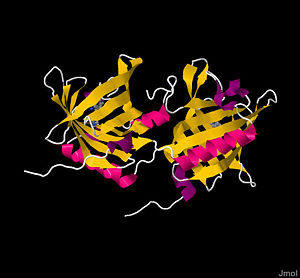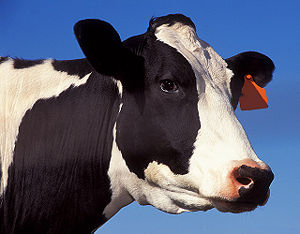User:Michael Kerins/Bovine Odorant Binding Protein
From Proteopedia
Bovine Odorant Binding Protein
Imagine a world without smells: no fresh cookies, no Valentine’s Day roses, and no stinky gym socks. The sense of smell clearly plays a unique role in how humans and other organisms experience their environment. Unlike the physical objects we see and touch, scents travel invisibly through the air, enter our nose, and elicit a sensory perception. The transduction for this sensory mechanism is crucial in eliciting neuronal activity to stimulate the brain. Before transduction is starts, however, select smell molecules, called odorants, must cross a water mucosa layer to reach an extracellular receptor. In bovines, this feat is performed by Bovine Odorant Binding Protein (bOBP), a small homodimeric protein composed of two β-barrels that utilize a hydrophobic ‘trap’ to transport and release odorants at cellular receptors.[1]
Background
To understand the importance of bOBP[1]


